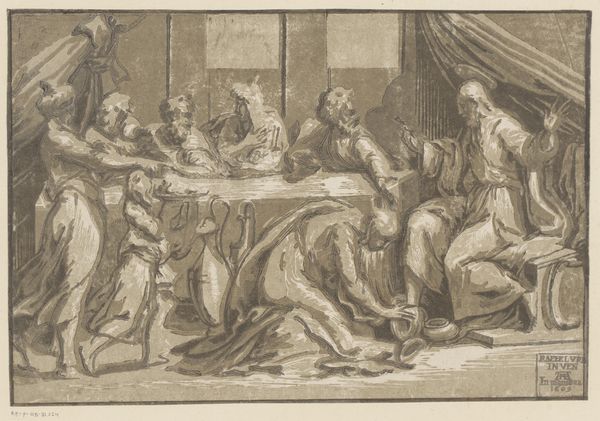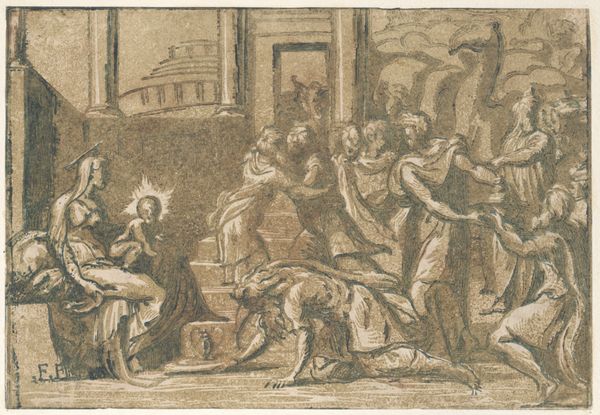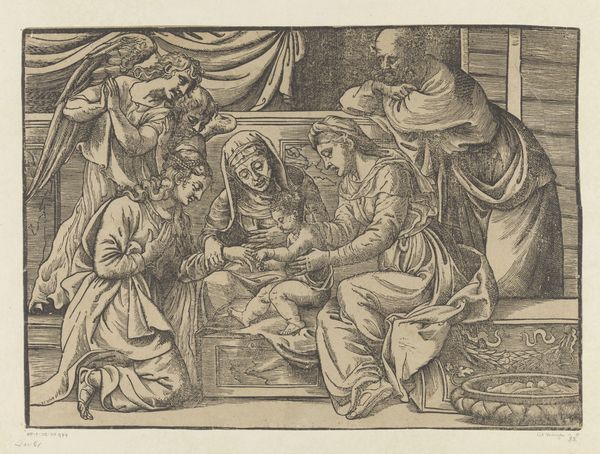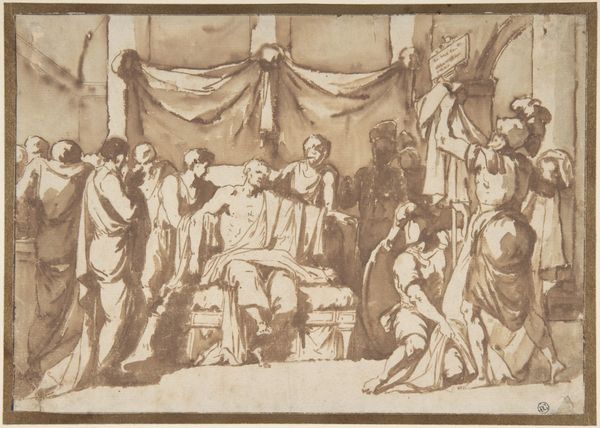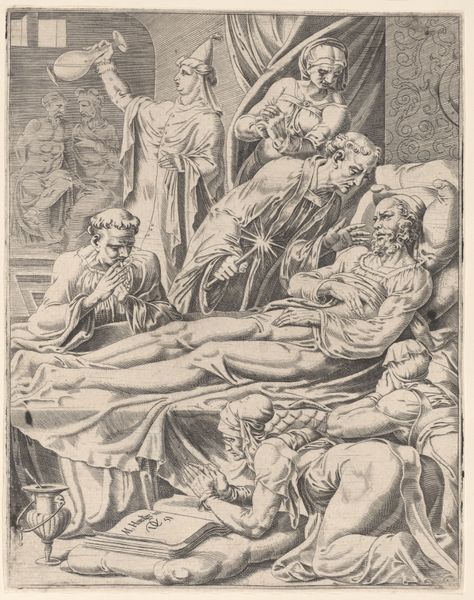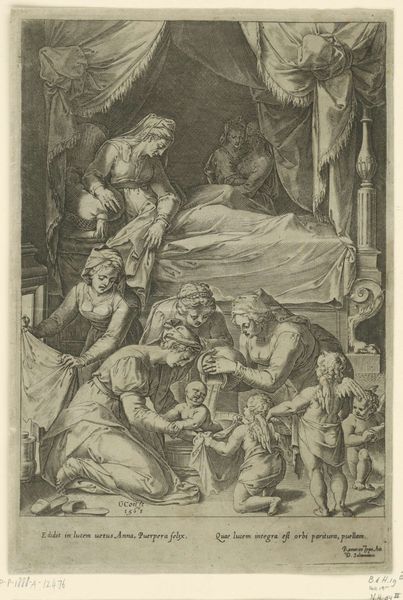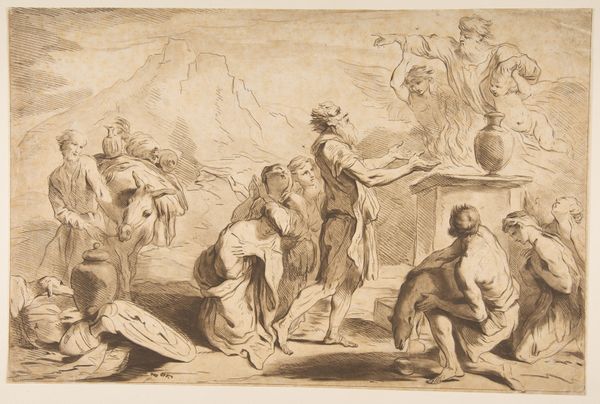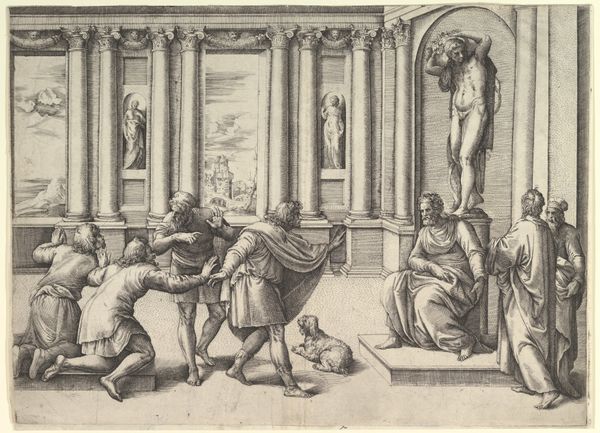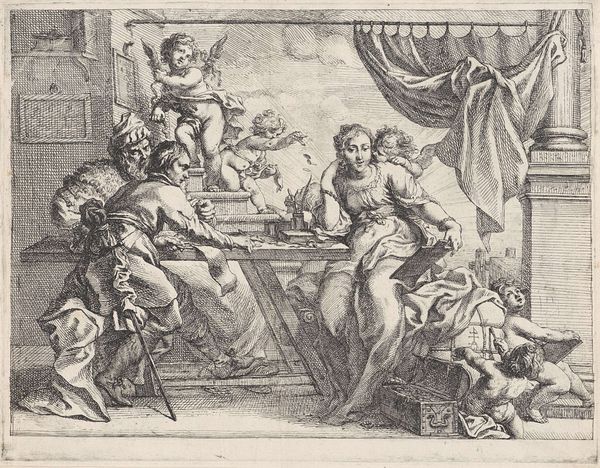
Jesus in the House of Simon, The Pharisee 1480 - 1532
0:00
0:00
ugodacarpi
SMK - Statens Museum for Kunst
print, engraving
# print
#
figuration
#
11_renaissance
#
history-painting
#
italian-renaissance
#
engraving
Dimensions: 250 mm (height) x 345 mm (width) (bladmaal)
Curator: Ugo da Carpi's "Jesus in the House of Simon, The Pharisee" strikes me immediately as dramatic, almost theatrical. The chiaroscuro—that bold contrast between light and dark—pushes all the figures forward. It’s an image packed with both tension and a strange sort of intimate tenderness. Editor: This print, realized sometime between 1480 and 1532, presents us with a visual articulation of class tensions within a sacred narrative. Da Carpi translates this key moment, placing Jesus amid societal scrutiny, highlighting a discourse on religious propriety and social reform. The very act of creating prints like this one democratized access to such scenes. Curator: Democratized! Precisely. Prints made it portable, digestible. I feel the story anew, a ripple effect of seeing it passed on. Even with this monochrome treatment, the way the characters interact and how it's portrayed here lends it an air of timeless drama. Look how present Jesus is, hands outstretched, engaged with... well, chaos really. Editor: Right, and that's crucial! Da Carpi’s utilization of the chiaroscuro technique does not merely amplify the drama. Rather, it accentuates the divisive climate inherent to the gospels and even reflects the religious upheavals simmering in Europe. The narrative choices Da Carpi made invited viewers into the heated socio-religious dialogue unfolding beyond the walls of the gallery. Curator: Mmh, indeed. It is hard to not connect it back to the broader debates of its time. Even so, beyond its polemic value, to me there's something touching about the scene of the woman at Jesus's feet. You can almost sense the weight of expectation in the other figures, too, watching, waiting. Does it ever feel like a snapshot in history or a real scene, or what? Editor: Exactly. I consider works like this from Da Carpi as potent intersections where religious history intersects with social commentary and artistic innovation, capturing a visual glimpse of our ever-changing understanding. Curator: Well, it definitely puts me in the center of the narrative. Thank you for unveiling additional elements!
Comments
No comments
Be the first to comment and join the conversation on the ultimate creative platform.
